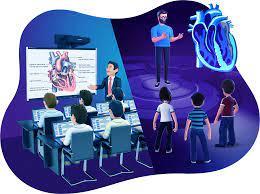The Metaverse includes the convergence of many different technologies such as virtual reality (VR), augmented reality (AR), artificial intelligence (AI), wearable haptics, electromyography (EMG) technology, and neural interfaces, with the collective potential to produce immersive online experiences. worlds filled with new ways to communicate and learn.
According to McKinsey & Company, with over $120 billion invested in creating Metaverse assets in 2022 alone, how is the Metaverse shaping the online learning environment? Students and educators interested in student-centered learning will be delighted to learn how the Metaverse is already influencing the evolution of education.
The future of education is in the hands of those who design it. While still under development, the Metaverse offers opportunities to create a fairer, more accessible, and more engaging online learning environment.
Early leaders in the field are working in tandem to create immersive 3D environments that will revolutionize the way people interact in virtual and blended worlds. From Google to Meta, from Microsoft to Apple, from Qualcomm to NVIDIA - not to mention gaming companies like Roblox, Epic and Unity - leading tech companies and stakeholders are driving the evolution of the Metaverse.
Not only large companies are investing resources in the creation of the metaverse. Teachers, digital designers, policy makers and researchers can share their skills to add new technologies that could radically change the online education experience.
Wearable technology
One of the many exciting features of the metaverse is the promise of connecting the physical and digital spaces. New wearable technologies such as augmented reality technology and haptic technologies exist at the forefront of educational innovation.
Augmented reality technology
What is the next stage in the evolution of education? An augmented reality technology that combines digital information with the physical world in real time.
For example, augmented reality glasses. People have been using glasses for hundreds of years to improve their eyesight. Augmented reality glasses are wearable glasses that not only correct vision but also add information such as 3D images, animations, and text to the user's field of vision. A student studying plants in the spring with augmented reality glasses can, for example, quickly scan and identify the name and species of a particular tree, and augmented reality glasses can also visually display what its fruits will look like when they are ripe. is in season.
Augmented reality glasses can receive information from a number of sources, including smartphones and Wi-Fi, Bluetooth and GPS enabled devices, making augmented reality glasses a powerful learning tool for both children and older students.
